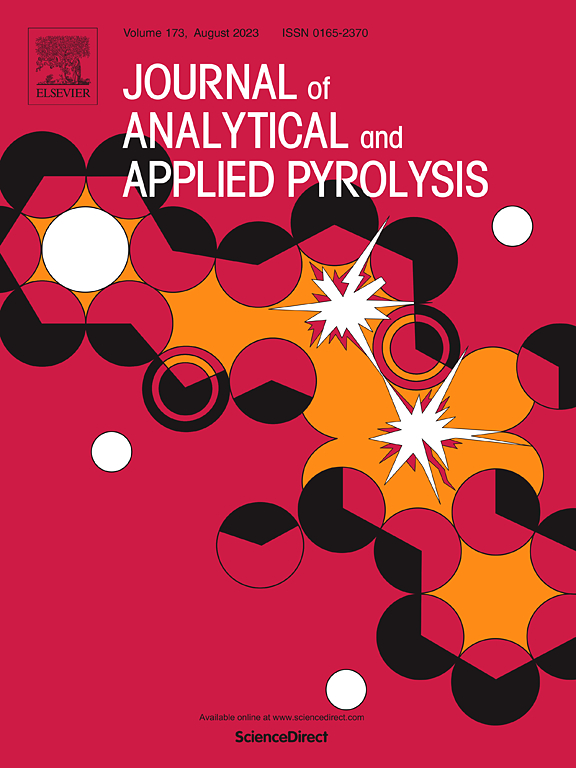基于反应动力学模型的煤焦油和厨房废油共加氢过程分析
IF 5.8
2区 化学
Q1 CHEMISTRY, ANALYTICAL
引用次数: 0
摘要
厨房废油 (KWO) 和煤焦油 (CT) 是两种常用的原油替代品,可通过加氢法生产燃料。如果这两种原料能够共同加氢,将有助于拓宽公司的原料来源。因此,为了揭示这两种材料在共加氢过程中产生的积极和消极影响,并对这些现象进行定量分析,本研究完成了 CT 和 KWO 的共加氢实验。计算了共加氢反应的反应动力学参数。实验表明,与煤焦油加氢产物(CTHP)共加氢可使 KWO 的加氢效率提高约 1.5%。这种促进作用主要归因于 CTHP 中的四氢萘和六氢萘等化合物的供氢特性。通过反应动力学和热力学的综合模型计算得出,在催化剂作用下,KWO 加氢脱氧的活化能为 50.936 kJ-mol-1,而在 CTHP 供氢作用下,活化能为 148.429 kJ-mol-1,这种促进作用占总反应的 19.3%(通过比较反应速率常数推断)。本文提供的实验数据和计算得出的反应参数可为技术设计改进提供依据。本文章由计算机程序翻译,如有差异,请以英文原文为准。
Analysis of the co-hydrogenation process of coal tar and kitchen waste oil based on reaction kinetics model
Kitchen waste oil (KWO) and coal tar (CT) are two commonly used alternatives to crude oil for fuel production through hydrogenation. If these two raw materials can be co-hydrogenated, it will help broaden the company's sources of raw materials. Therefore, in order to reveal the positive and negative impacts of the co-hydrogenation process of these two materials and to conduct a quantitative analysis of these phenomena, co-hydrogenation experiments of CT and KWO were completed in this study. The reaction kinetics parameters of the co-hydrogenation reaction were calculated. Experiments have shown that co-hydrogenation with coal tar hydrogenation products (CTHP) can increase the hydrogenation efficiency of KWO by approximately 1.5 %. This promoting effect is mainly attributed to the hydrogen-supplying properties of compounds such as tetralin and hexahydro naphthalene present in the CTHP. Through a combined model of reaction kinetics and thermodynamics, it is calculated that the activation energy of KWO hydrodeoxygenation under the action of catalysts is 50.936 kJ·mol−1, while under the action of CTHP hydrogen supply, it is 148.429 kJ·mol−1, and this promoting effect accounts for 19.3 % of the total reaction (as deduced from comparing reaction rate constants). The experimental data presented in this paper and the calculated reaction parameters can provide a basis for design improvements in technology.
求助全文
通过发布文献求助,成功后即可免费获取论文全文。
去求助
来源期刊
CiteScore
9.10
自引率
11.70%
发文量
340
审稿时长
44 days
期刊介绍:
The Journal of Analytical and Applied Pyrolysis (JAAP) is devoted to the publication of papers dealing with innovative applications of pyrolysis processes, the characterization of products related to pyrolysis reactions, and investigations of reaction mechanism. To be considered by JAAP, a manuscript should present significant progress in these topics. The novelty must be satisfactorily argued in the cover letter. A manuscript with a cover letter to the editor not addressing the novelty is likely to be rejected without review.

 求助内容:
求助内容: 应助结果提醒方式:
应助结果提醒方式:


